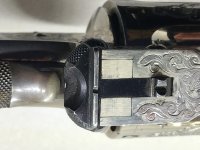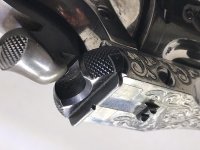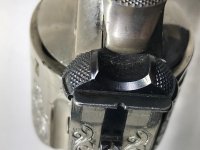TripleLock
Member
The rear sight shown in the OP's photos seems to be peculiar to those New Model No.3 revolvers that shipped to England. I have not seen this particular sight discussed in any of the usual sources... SCSW by Supica and Nahas, Smith & Wesson Revolvers by McHenry & Roper, Smith & Wesson 1857-1945 by Neal & Jinks, Smith & Wesson Revolvers by Parsons, History of Smith & Wesson by Jinks... but it does turn up in illustrations from Charles Osborne & Co. catalogs of the early 1900s (Osborne was the sole agent for Smith & Wesson in the U.K. from at least as early as 1899 until at least as late as the outbreak of WWI in 1914).
As alluded to in Jim Watson's post above, the rules for Bisley prohibited rear sights which were adjustable for elevation, and only allowed windage adjustment "with or without the use of a hammer."
Not a sight that is often seen on this side of the Big Pond.
Jim
As alluded to in Jim Watson's post above, the rules for Bisley prohibited rear sights which were adjustable for elevation, and only allowed windage adjustment "with or without the use of a hammer."
Not a sight that is often seen on this side of the Big Pond.
Jim
Last edited:



